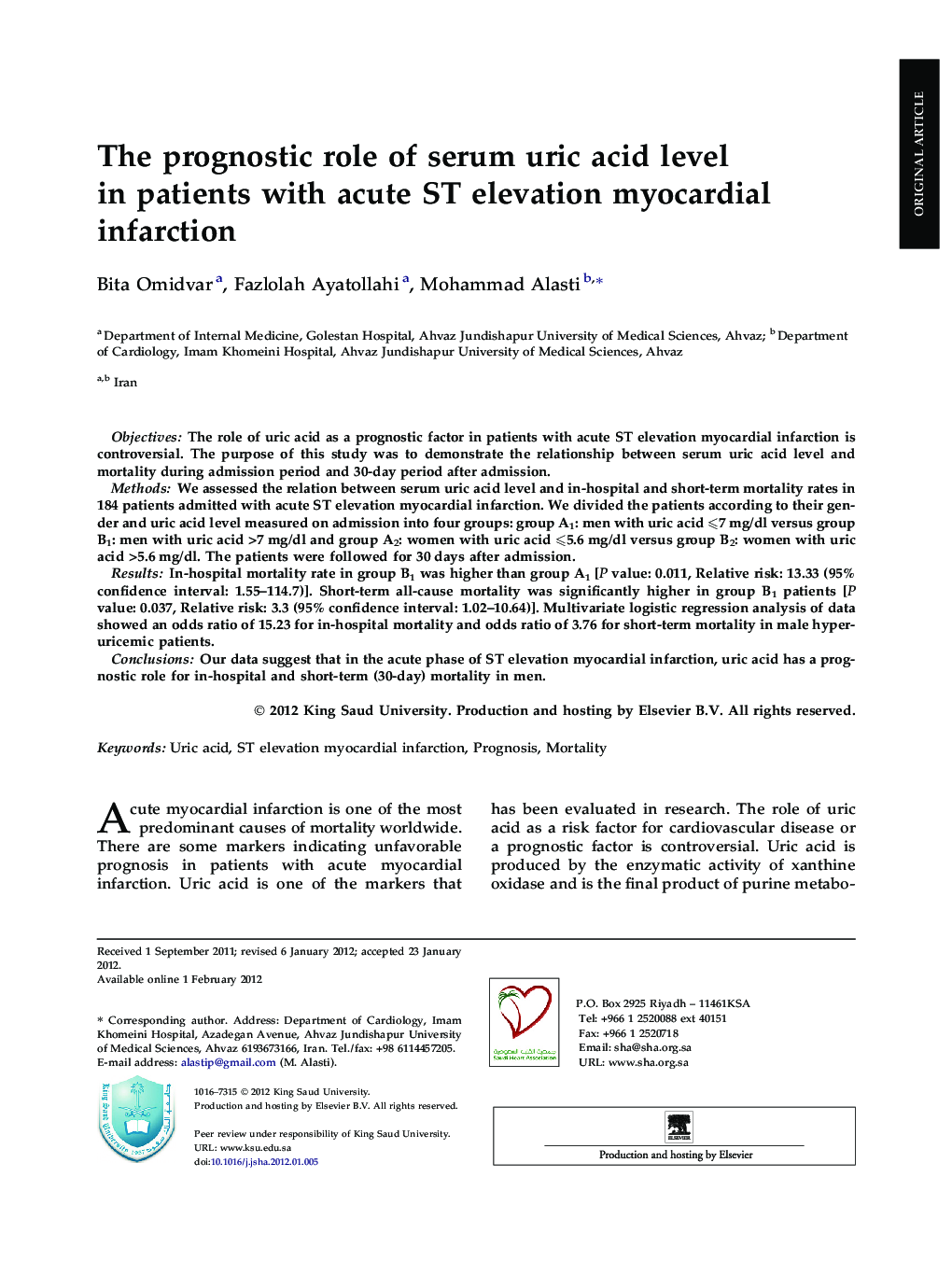| Article ID | Journal | Published Year | Pages | File Type |
|---|---|---|---|---|
| 2978429 | Journal of the Saudi Heart Association | 2012 | 6 Pages |
ObjectivesThe role of uric acid as a prognostic factor in patients with acute ST elevation myocardial infarction is controversial. The purpose of this study was to demonstrate the relationship between serum uric acid level and mortality during admission period and 30-day period after admission.MethodsWe assessed the relation between serum uric acid level and in-hospital and short-term mortality rates in 184 patients admitted with acute ST elevation myocardial infarction. We divided the patients according to their gender and uric acid level measured on admission into four groups: group A1: men with uric acid ⩽7 mg/dl versus group B1: men with uric acid >7 mg/dl and group A2: women with uric acid ⩽5.6 mg/dl versus group B2: women with uric acid >5.6 mg/dl. The patients were followed for 30 days after admission.ResultsIn-hospital mortality rate in group B1 was higher than group A1 [P value: 0.011, Relative risk: 13.33 (95% confidence interval: 1.55–114.7)]. Short-term all-cause mortality was significantly higher in group B1 patients [P value: 0.037, Relative risk: 3.3 (95% confidence interval: 1.02–10.64)]. Multivariate logistic regression analysis of data showed an odds ratio of 15.23 for in-hospital mortality and odds ratio of 3.76 for short-term mortality in male hyperuricemic patients.ConclusionsOur data suggest that in the acute phase of ST elevation myocardial infarction, uric acid has a prognostic role for in-hospital and short-term (30-day) mortality in men.
